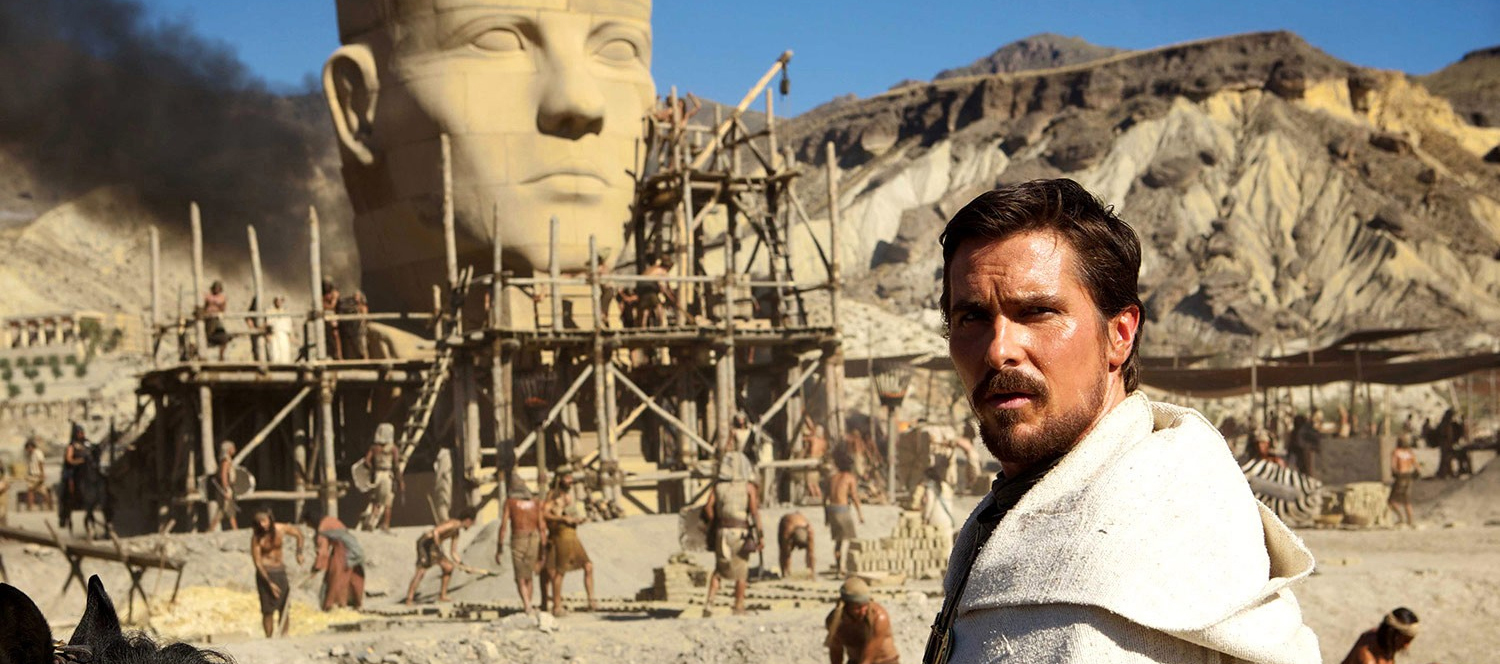
Blood Feud: Exodus: Gods and Kings
Dariusz Wolski, ASC, creates a 3-D canvas for Ridley Scott's epic period drama.
Dariusz Wolski, ASC creates a 3-D canvas for director Ridley Scott’s epic period drama.
Unit photography by Kerry Brown. Photos and frame grabs courtesy of 20th Century Fox.
In the pantheon of epic stories, the tale of Moses and Pharaoh Ramses just might set the bar. Two brothers, once as close as any siblings could be, are separated by a divine call from the heavens and battle over the fate of 400,000 Egyptian slaves. Bringing a saga of such epic grandeur to modern screens requires a filmmaker who revels in big setups, so it was no surprise to find Ridley Scott’s name imprinted on the director’s chair during production of Exodus: Gods and Kings. Scott was joined on the adventure by his own battle-tested brother-in-arms, cinematographer Dariusz Wolski, ASC.
Early in his career, Wolski had worked with Ridley’s brother Tony on Crimson Tide and The Fan. After knowing Ridley socially for years, Wolski first partnered with him when the director began work on his Alien prequel, Prometheus, which he’d decided to shoot in native 3-D (AC July ’12). Impressed by Wolski’s success with the stereoscopic process on Pirates of the Caribbean: On Stranger Tides (AC June ’11), Ridley suggested they join forces.
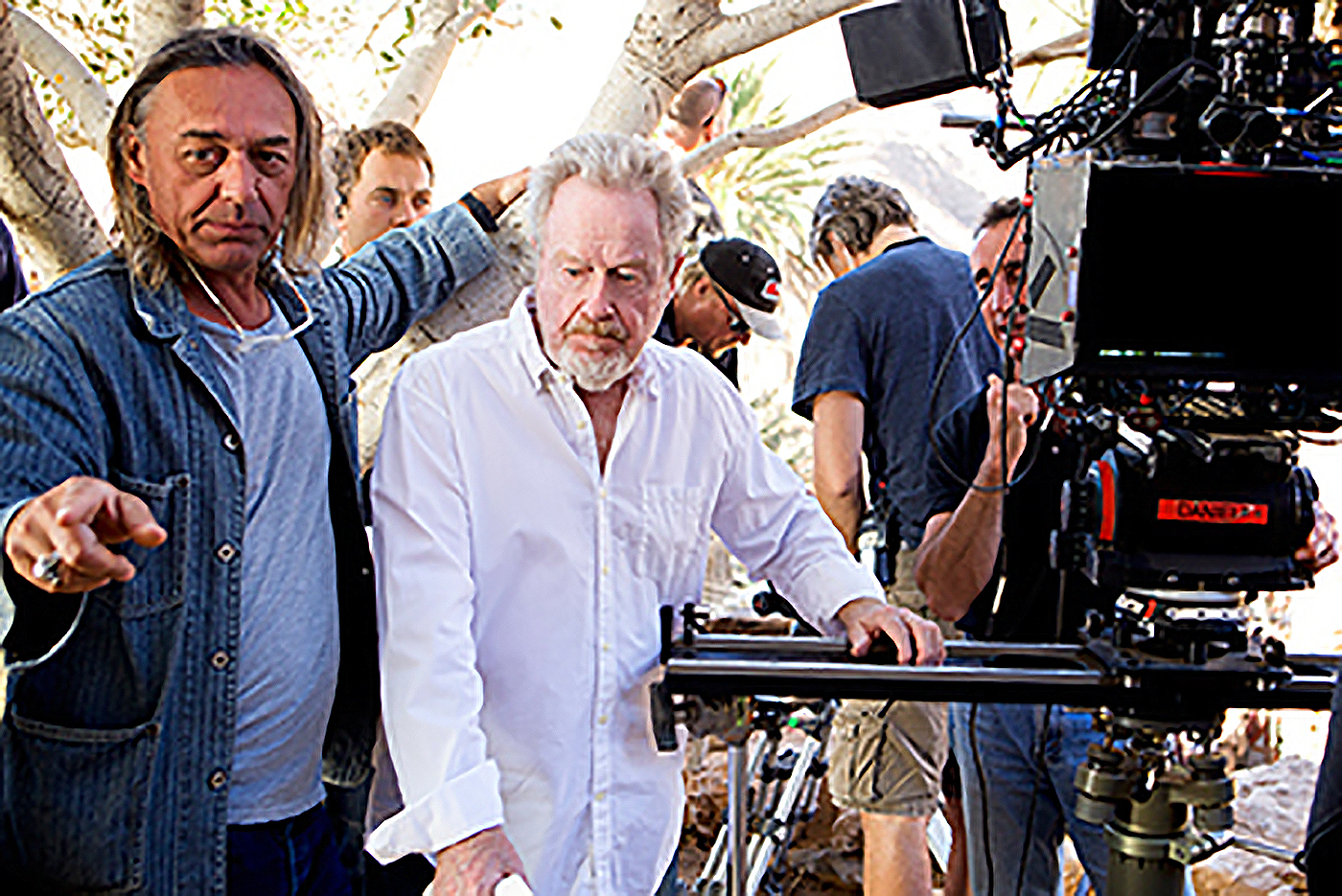
“Converting is just as good as shooting native 3-D these days,” Wolski opines, “but Ridley wants to see things in 3-D immediately. He wants to feel the shot and see what it’s going to look like in the final. It’s really a matter of individual process, a matter of thinking. If you just shoot a 2-D movie and convert it later, it doesn’t look right. That’s not the fault of the technology; that’s a fault in the process of creating the movie. You have to keep in mind that the image is three-dimensional. You have to shoot deeper stops, you have to compose for depth, and you have to be careful when using longer lenses. We did all of that on Exodus, and we could see immediate results by shooting native 3-D, which gave Ridley the opportunity to refine every composition.”
Shooting with two cameras in a single rig is complicated enough, but adding three or four additional 3-D rigs for every scene quickly raises the stakes. “We had quite a few rigs,” Wolski notes. “Normal dialogue scenes would be shot with three to four 3-D rigs, and when we shot the big battle, we had up to 12 cameras; six were 3-D camera rigs and the rest shot 2-D. It’s always a challenge working with multiple cameras. It’s like a puzzle, but because you capture the whole event as it plays out, it’s amazing what you can get if you put the cameras in the right place. The actors love it because they can go all the way through the scene and really live it. We always kept one rig on a Technocrane, which was usually our master, and then worked in the other cameras for coverage. It was a challenge at first, but now I think I’d cut my wrists if I had to shoot with just one camera!
Wolski's camera of choice for this arsenal was the Red Epic MX, which records internally to RedMag SSD cards. The Dragon was in limited supply as shooting began, though the team did use one “for helicopter plates and things like that — big 2-D wide shots,” says Wolski. He adds that he was perfectly content with the 5K resolution of the MX. “You don’t need more Ks!”
Wolski turned to 3ality Technica for his 3-D rigs, and to stereographer James Goldman, with whom he had worked previously. “I am absolutely aware of I/O and convergence, but I have a really trustworthy stereographer, so I let him make those decisions,” Wolski says of Goldman. “From Pirates to Prometheus we pushed 3-D further and further while we were getting more comfortable with it. In the beginning, it was really scary, but now we’re getting the hang of it. Exodus will have the biggest volume of any of the 3-D movies I’ve shot — but you have to be careful how big!”
For Exodus, the decision was made not to converge on set, but to save that step for post to give Scott control over the film’s 3-D effects on a shot-by-shot basis. Gareth Daley, who was on the crew as a 3-D systems engineer, worked in London and L.A. with the visual-effects team and Company 3. “Gareth oversaw the post stereo process, making sure the convergence decisions worked once shots were finalized,” notes Wolski.
“We weren't converging so that elements would pop out of the screen — it was all about depth,” he continues. “Ridley isn’t into [3-D] gimmicks. He wants big vistas and deep dimensions.”
On set, Wolski preferred to look at a 2-D image. “Ridley had his 3-D monitor, one for each of the cameras, but I only use one monitor. It has a sophisticated switcher so I can look at each camera and each rig so that I can see each setup and eye. That one is only for me and my DIT. I like looking at lighting on only one monitor. Also, it’s really important that each lens is focused exactly the same. If one is slightly off, it really ruins the effect of the 3-D, and it’s easier to determine individual focus if you look at separate images. I look at the monitor to rough in my lighting, and then look at Ridley’s with him to discuss composition and depth. When we watch dailies, we watch them in 3-D. Next to our tent was the 3ality truck, where James and his team monitored everything that was going on and kept track of our 3-D elements.”
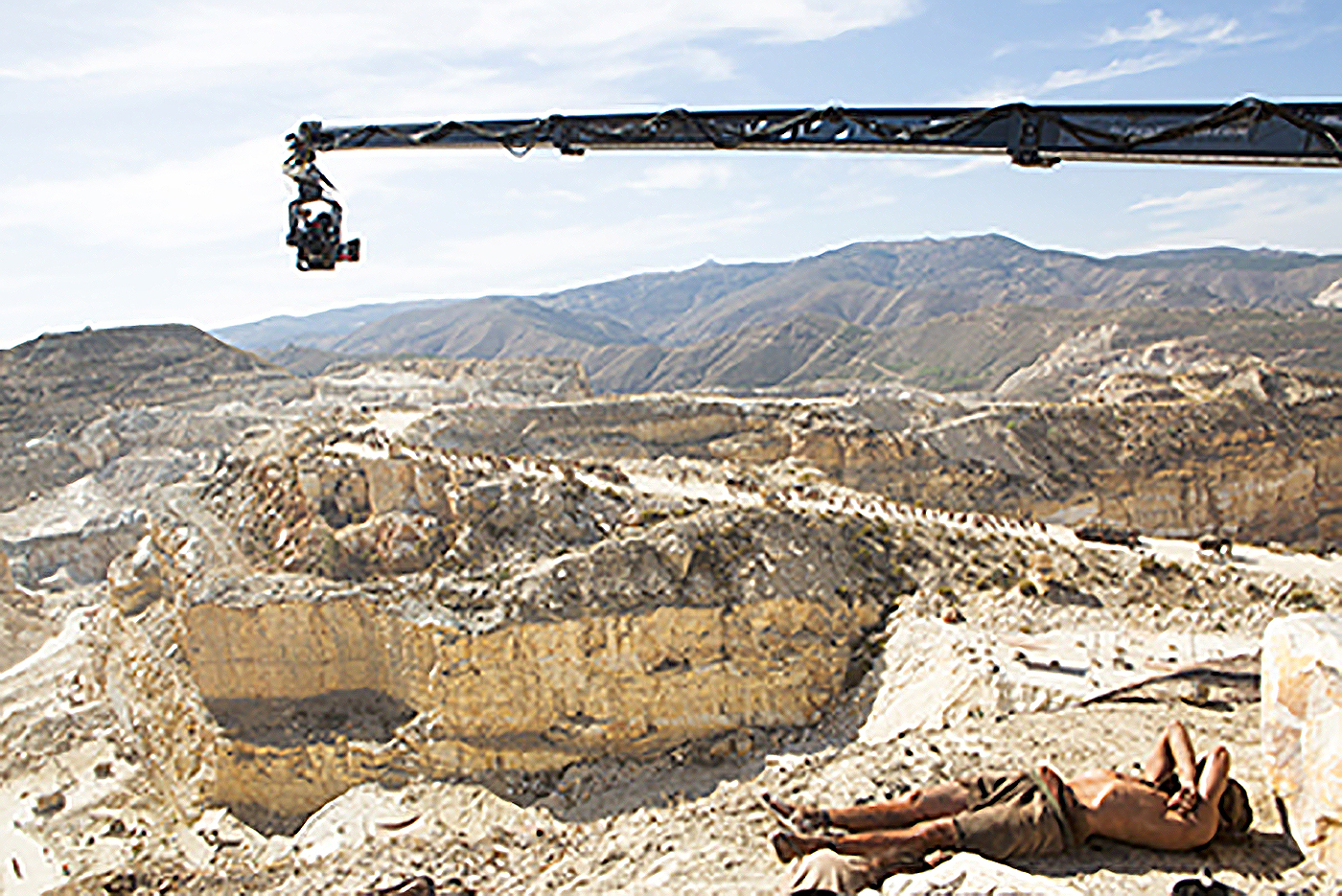
Wolski chose Angenieux Optimo zoom lenses for nearly all of the Exodus shoot, primarily employing a 15-40mm and 28-76mm (both T2.6), with some use of a 45-120mm (T2.8). “The zooms are small, and they fit well in the rig,” he observes. “The beauty of zooms is that you don’t have to change out lenses. A good assistant can change out a prime in a 3-D rig in five to 10 minutes, but we save that time by using zooms. If we’re switching out lenses, the whole process stops, which can destroy the fluidity of the production. I’m not one of these cinematographers who likes to boast about what amazing, special lenses I used. At the end of the day, people go to the movies to watch the [story], and they don't have a clue what lens it was shot with. We’re in the 21st century, with amazing technology to make the process simpler. Kids will shoot great movies on iPhones while cinematographers will discuss whether it’s Zeiss, Cooke or Leica lenses. You go with what you have and what works best for the project. For me, the flow of work is the most important thing.”
Working with zoom lenses in 3-D rigs can be tricky because not all zooms are created equal, and some focal lengths may not be exact. A match between the lenses is of paramount importance. “If you prep the lenses properly, you’ll be fine,” Wolski submits. “It takes a bit of time to go through lenses and make sure they match, but it’s well worth the investment. 3-D technology has come a long way in recent years. We can now zoom in-shot without issues. That's pretty amazing.”
Exodus shot primarily in the U.K. at Pinewood Studios, with location work in Almeria, Spain, and Fuerteventura in the Canary Islands (for the Red Sea sequences). “Fuerteventura has amazing deserts and three completely different-looking coasts,” Wolski enthuses. “One coast has incredible beaches, one has beautiful mountains, and one has lots of rocks and tidal pools. In the mountains, there’s an amazing, tiny, winding road where we shot Ramses and his army in chariots, racing after the Hebrews. We shot the wide shots there for real. We combined all the coasts into one to make the Red Sea sequence, which was quite a puzzle to figure out. We had to trace the sun direction from one side of the island to the other to make sure the different areas fit together as one cohesive sequence.
“That complicated what is typically the biggest challenge on a movie like this: daylight exteriors. On one beach, the sun sets behind the mountains, and on the other beach, it sets in the ocean. You have to be very clever about how you shoot and approach that! I tried to make sure we were chasing backlight as much as we could. When we were on the south-facing beach, we’d shoot from land to sea, and on the other side, we’d be in the water looking at people on the beach. Day exteriors are always hard, and on this scale there wasn't much we could do — you can’t silk over 700 people on a beach! You’re at the mercy of stronger powers, and you have to compromise to deal with it because you can’t fight it.”
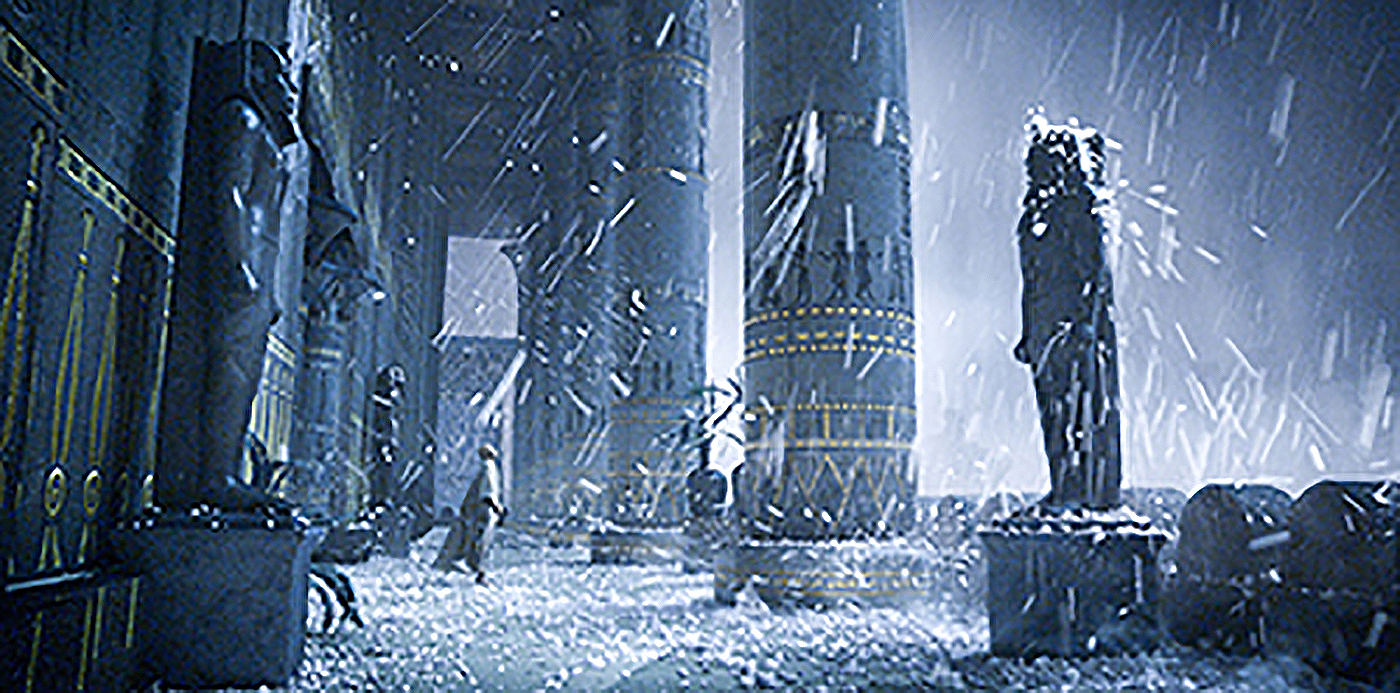
Wolski says he shot a surprising amount of day-for-night on Exodus. “That was a big chance to take,” he confesses. “There were huge shots of huge landscapes that we just couldn't light, so we decided to create this moonlight day-for-night look. We approached it classically, using the sun as a 3/4 frontlight to make sure we could take the sky way down but still have some exposure on the faces. You can’t put too much light on faces when you’re shooting during the daytime or you’ll lose the effect. I didn’t use any filtration — that’s almost impossible to do in 3-D — but just went with gross underexposure and graded the image to be a little monochromatic in post.”
Although some of the film’s sets received CG augmentation, many of the vast locations were actually built. “We had some really gargangtuan sets,” Wolski recalls. “Often people will build large sets and only shoot a small portion, but with Ridley, you shoot every inch of them.”
The sets were so large that they encompassed nearly every available inch in the soundstages, leaving little room for lighting. Wolski elected to take a very naturalistic approach to his lighting for day-interior sets, turning to the Luminys Systems SoftSun 50K sources as his keylight. He explains, “The reason I used those for our sets was that historically, the Egyptian locations had huge openings for light to come through. The SoftSun created the most natural ‘one big shadow’ look that I could find. This was the first time I’d ever used it this extensively, and it became the basic formula for the locations. I treated it like backlight or sidelight if we were outside, and that’s how I handled the interiors. I didn’t silk it or do any [other] cosmetic things; I left it hard and clean to make it feel sunny and hot. Some sets had canopies built into the design that created a natural soft light from the SoftSun source. Using just one main source meant we could move a lot faster and get better performances, rather than moving around big cranes or lights. I could take the SoftSun back and find the right angle to show the shadows from columns with the ‘sun’ creeping through. Those shots have a very realistic feel.”
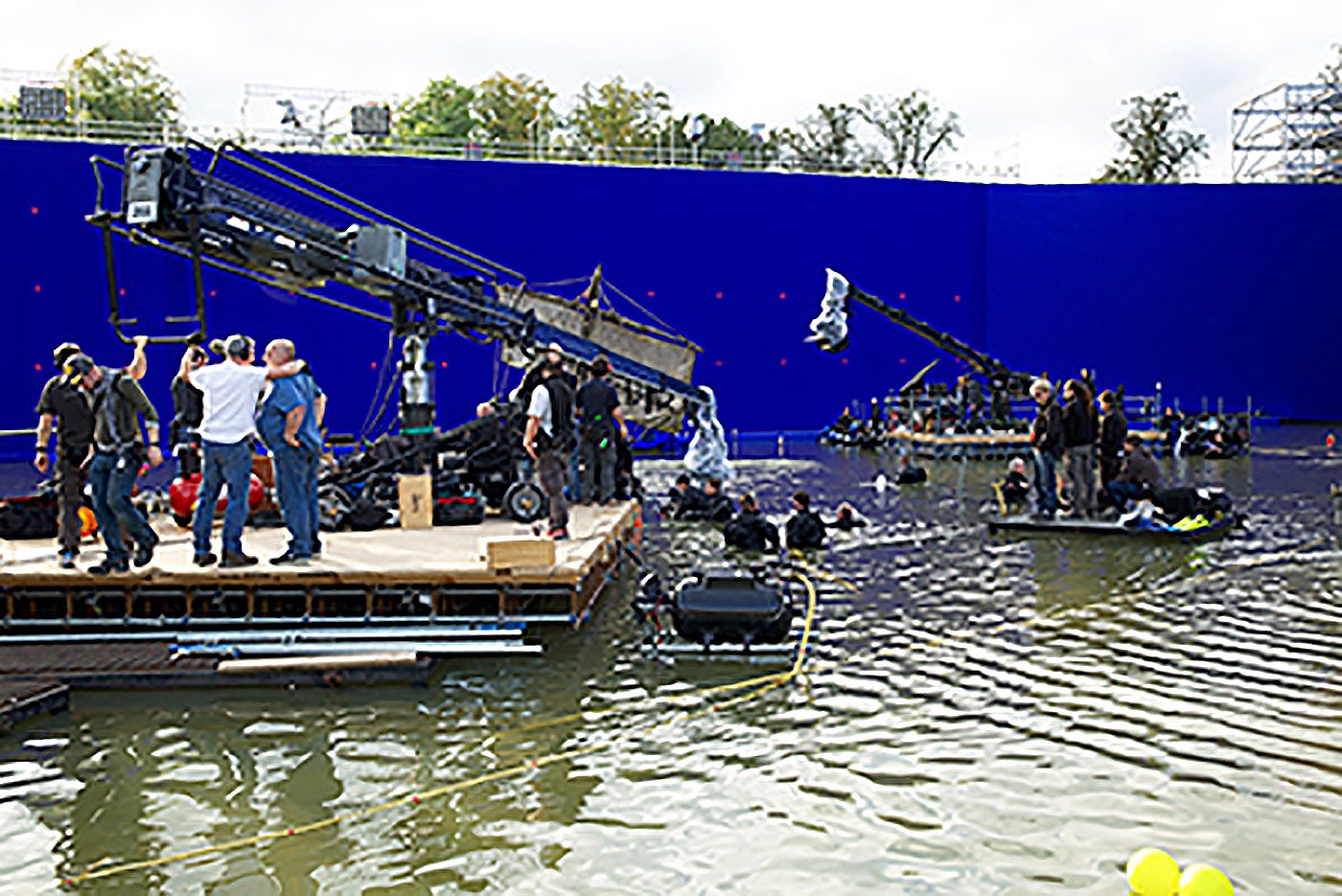
Production designer Arthur Max worked with Scott to design a highly modular primary set. All of the large columns were on chain motors, which allowed the crew to relocate them easily to create a different set. One large stage at Pinewood housed Ramses’ temple and palace and many other interiors. “We’d shoot for two or three days on the large set and then move to another stage while the main set was reconfigured overnight,” Wolski explains. “We shot 12 sets on that one stage, with a big greenscreen outside to change the view as needed, whether that was looking out over the Nile, the pyramids or other parts of the city. The second, smaller stage was used for Ramses’ bedroom, balcony and hall. The third stage housed other interiors. Ridley has phenomenal experience and courage. He knows what he can get away with, and he isn’t afraid to push the boundaries.”
Wolski's crew took thin strips of LEDs and wrapped them around a 4'x4' open frame to create what he calls a “4-by-4 blanket, or a 2-by-4. They’re thin, they don’t take up a lot of space and they create a very soft source. If I bounce them off paper or put some diffusion on top, I can create the quality of light I’d get with a Fresnel, but in a soft box that’s 3 inches deep instead of 5 feet. In the past, every cinematographer fought with toplight and sidelight to keep fixtures out of the shot. Now we have smaller fixtures that are way more flexible.”
On the subject of larger sources and toplight, Wolski admits he has a passion for balloon fixtures, which he employs primarily for night interiors. “It’s not just the fact that you can fly them up in the air,” he says. “I love their quality. They create a really beautiful light, and they’re easily controlled by two strings.” He doesn’t employ a skirt on the balloon to control the light, but rather tapes off 1⁄3 or more of the light surface to create a slit of light. For Exodus, he used hybrid balloons with two 4K HMI bulbs and four 2K tungsten bulbs, which he could turn on and off to adjust his color temperature.
Wolski doesn’t use gels on lamps and prefers to get his color purely from daylight or tungsten variations. “I use lights the way they are, tungsten or daylight. The only gels I ever use are a little magenta to fix any green. Everything else I do in the DI.
“Overall, for every setup, I look for the simplicity in the scene,” he adds. “What is the simplest way to approach this? If you haven’t found that answer, you’ll always be struggling. People tend to put more and more things into the scene to solve problems, but I tend to take things away. Instead of adding lights, I turn them off to refine a look. Luckily, Ridley is right there with me. He likes to turn things off, too, so I try to beat him to it!”

Wolski reveals that he broke a number of his own lighting rules on Exodus. For instance, “I got to the point where I wasn't afraid of frontlight. Outside we used really hot top sunlight, sometimes with deep shadows on the actors. Generally I avoid that kind of look, but we went with it; it just felt right. When Moses [Christian Bale] comes across a man being flogged, that entire scene plays in frontlight. We had people in white robes in bright sunlight, which you wouldn’t normally do, but those situations really worked for this story.”
One particularly tricky stereoscopic sequence, in which Moses encounters the slave elder Nun (Ben Kingsley), involved exteriors shot in Almaria and interiors shot onstage at Pinewood. Recognizing Moses as the prophesied savior who will lead the Hebrews to freedom, Nun urges Moses to come see him so that he can educate him about his past and his true purpose. During their discussion, Nun shocks Moses by informing him that he is a Hebrew. Wolski recalls, “The scene takes place at night, and I tried to approach it as realistically as possible. We used a lot of practical candlelight, augmenting and refining that look with all sorts of LEDs that we could hide around the set. I’ve done my share of candlelit scenes, and I always try to do it better each time I face that kind of situation. It’s tricky in 3-D. In 2-D with prime lenses, a candlelight scene isn’t such a challenge, but we were on zooms set at T2.8, and we were losing a stop through the half mirror in the 3ality rig. I was shooting at 800 ISO, but I still needed to augment the practical candles to get up to a T4.”
Wolski shot the vast majority of Exodus at 800 ISO, but there were moments when he increased the ISO to 1,250. “You don’t want to rate those cameras for less because you’ll have a problem of overexposing highlights,” he notes. “The middle of the chip is 800 ISO. All the things you would do when shooting film, you still do when shooting digital. You just have to be very careful about light. You feel light very quickly with digital, so you have to be more elegant and subtle with it.”
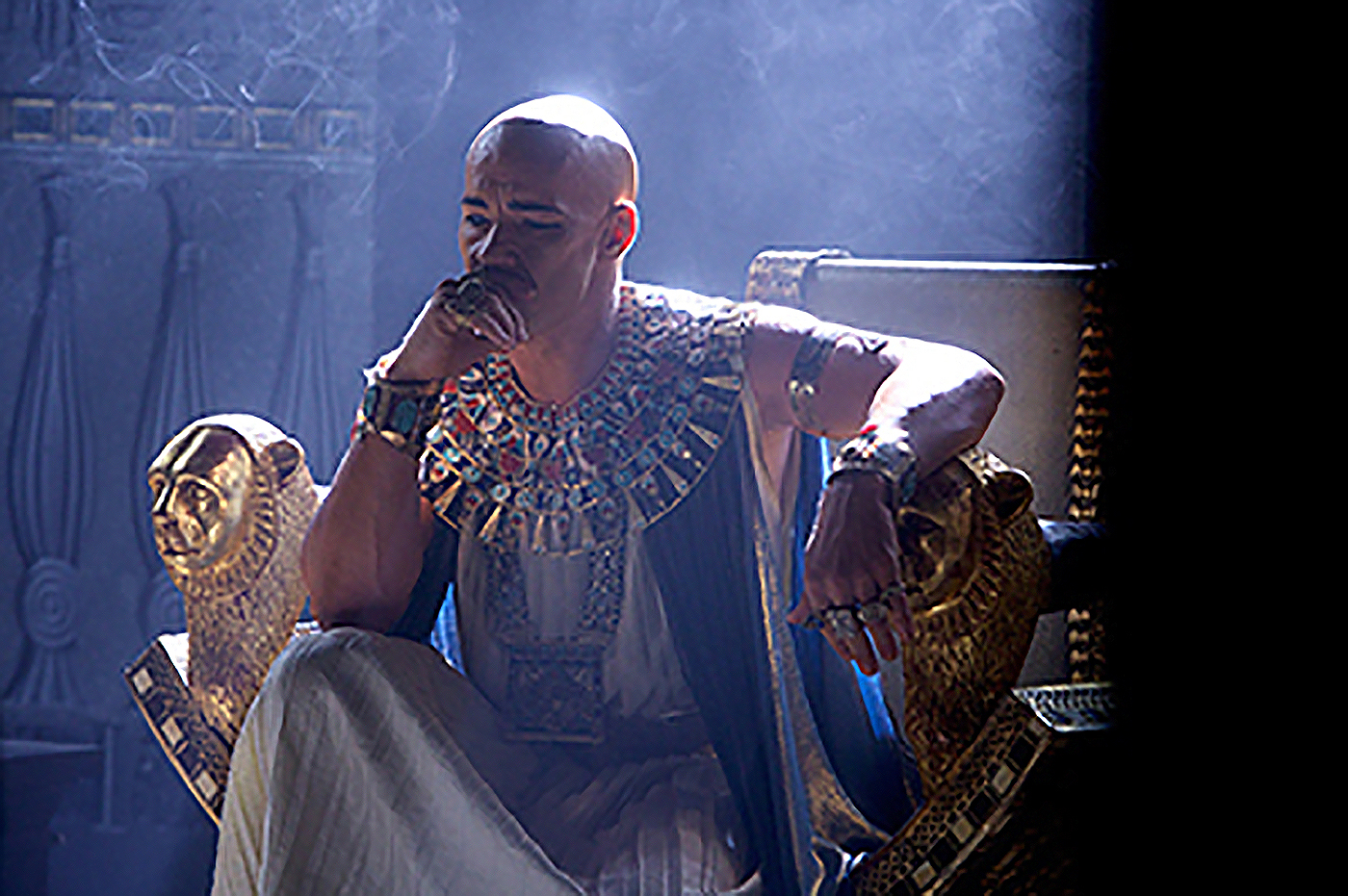
When Ramses (Joel Edgerton) hears the rumor that Moses is actually a Hebrew, he confronts him and his supposed mother, and threatens to cut off her arm if she does not confess the secret of Moses’ heritage. The scene takes place in Ramses’ temple, which was also built onstage at Pinewood.
“It was a difficult scene to shoot,” recalls Wolski. “There are a lot of angles from everywhere. We shot from every possible direction. There aren’t a lot of candles in the scene, so we had sort of ambiguous flames coming from somewhere. I decided to frontlight the first part of the scene, breaking from my tendency to always [use] 3/4 backlight and wrap the light to make it feel more dramatic. Then, when we cross the line to the other side, that frontlight becomes the more standard 3/4 backlight, making the look more dramatic."
Reflecting upon his experiences on Exodus, Wolski marvels that the complex production was shot in a mere 80 days. “Everything was very well prepared,” he says. “Ridley always has an amazing team of people and great actors. We work 10-hour days, straight through, and go home. It’s an exception to work at that pace, but everyone is extremely focused, and the days go by very fast.
“Working with Ridley is a great collaboration,” he continues. “He’s super smart, and he sees so many details. It’s always a great dialogue. He has a phenomenal array of references in terms of art, architecture and films. It’s always a real pleasure to get into discussions with him. He also has his own array of incredible experiences.
“There is an odd aspect to working with him, though. Because so many of us have been so influenced by his movies and have mimicked his work for our entire careers, we have to stop ourselves from ripping him off while we’re working with him! Ridley is totally aware of the danger of repeating himself, too. Sometimes we’ll set something up and throw some smoke into the scene, and he’ll look at it and say, ‘No, I’ve done this before,’ and we’ll take a different approach. He’s a super interesting human being in the way his brain works; it’s really incredible. This project was an amazing challenge and a great experience. There was never a dull moment!”






